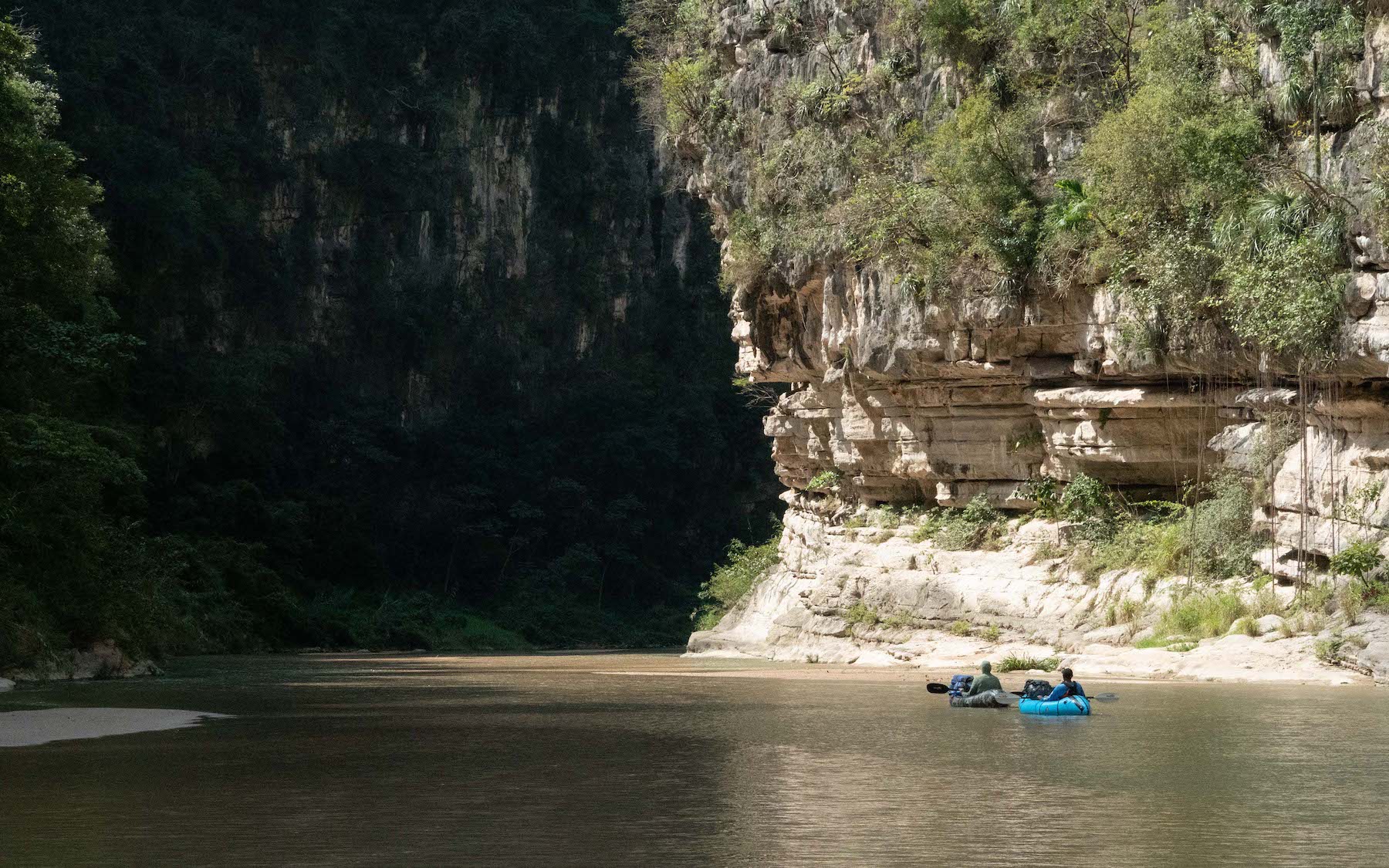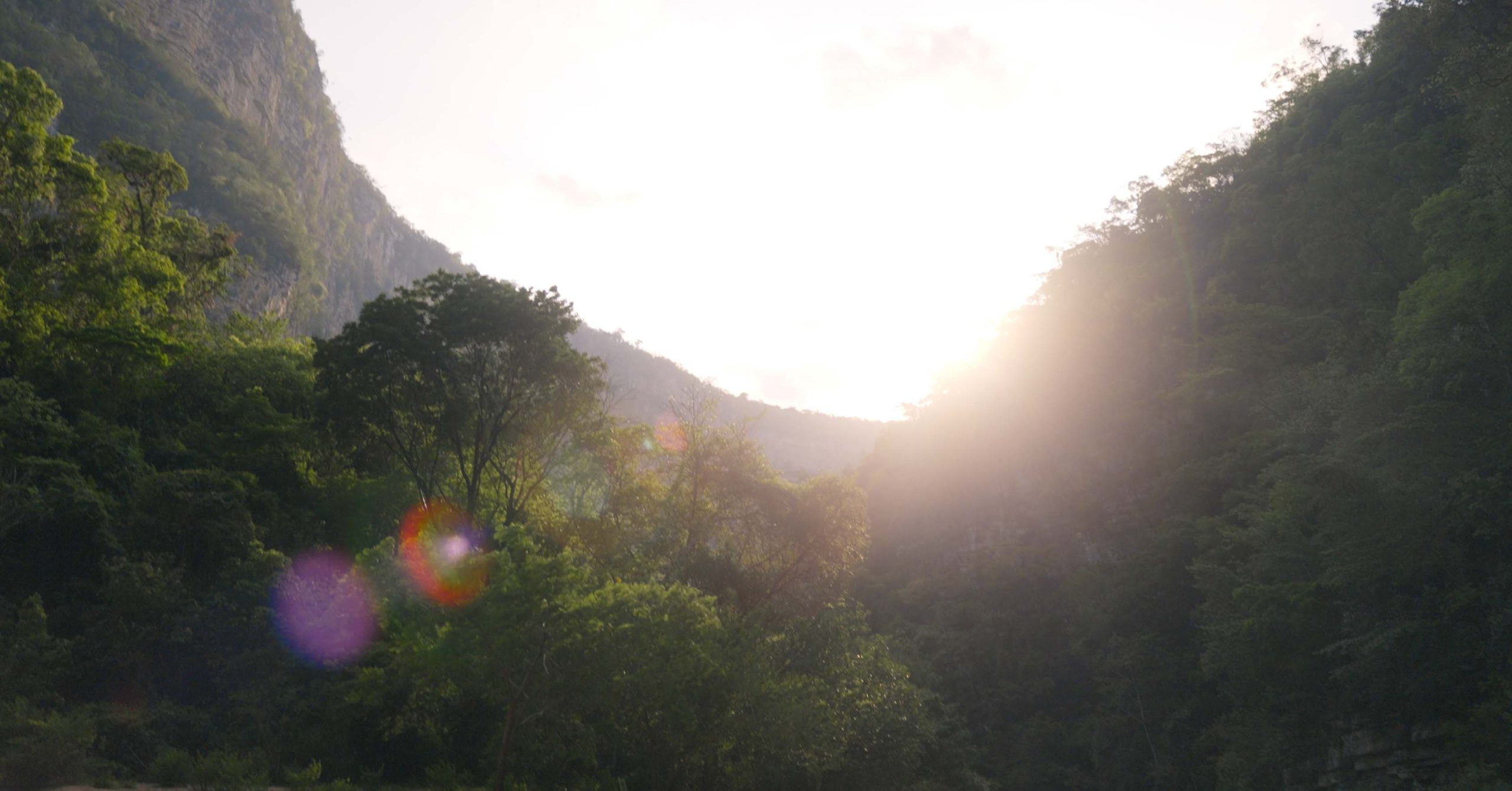What Is Leave No Trace? A Beginner's Guide
In today’s world, where outdoor adventures are more popular than ever, there’s growing focus on minimizing our impact on nature. That’s where Leave No Trace (LNT) comes in. Whether you’re hiking, camping, kayaking, or exploring remote areas, Leave No Trace is a set of principles designed to help adventurers like you preserve the beauty of our natural world.
NAHUA EXPEDITIONS
21 Feb 2025 ・ 10 min read
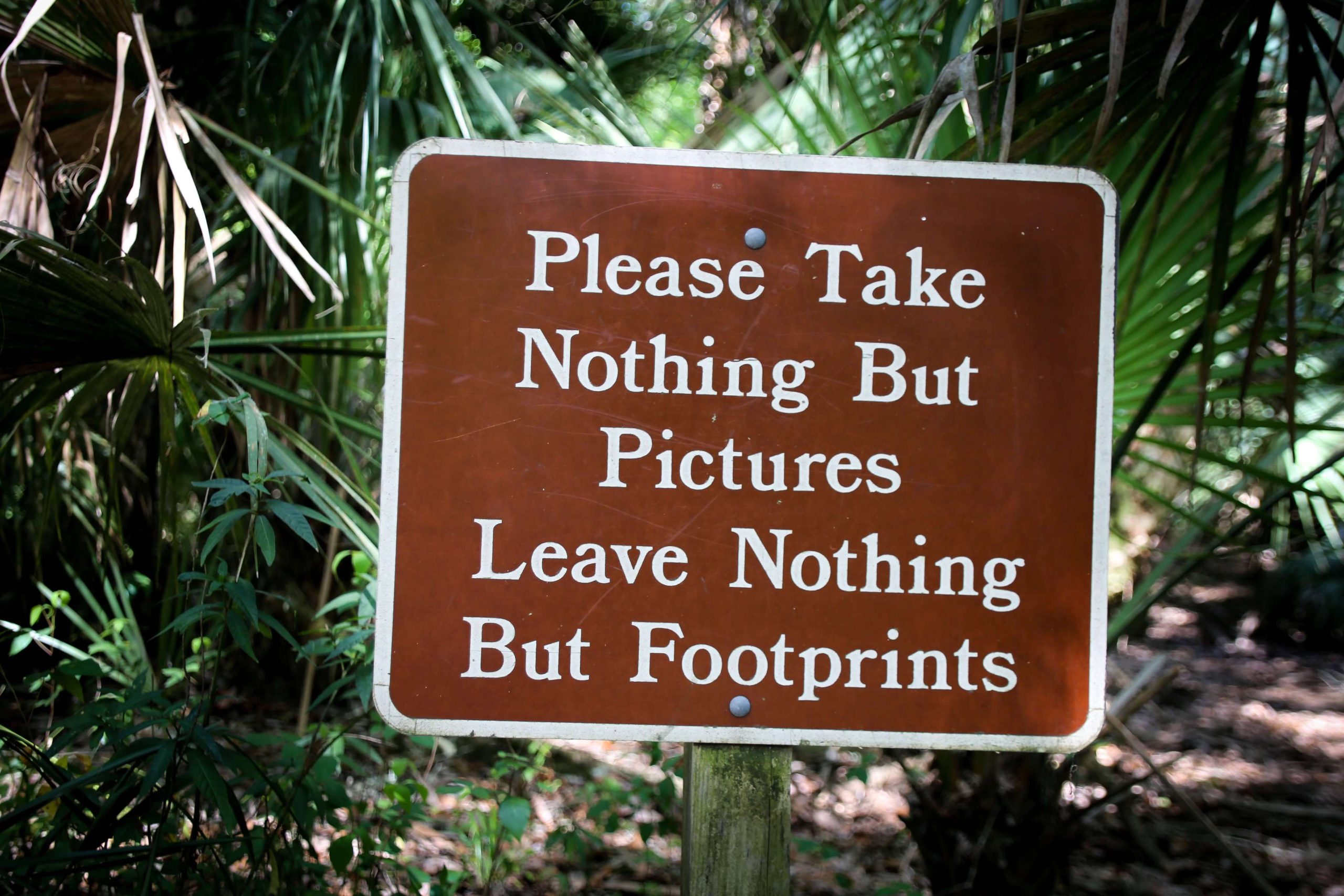
In this guide, we’ll break down what Leave No Trace is, why it’s important, and how you can integrate its principles into your own outdoor experiences!
What is Leave No Trace?
The goal of Leave No Trace is to reduce human impact on the environment, ensuring that wilderness areas remain pristine for wildlife to thrive, and for future generations to enjoy. LNT is more than just a set of rules—it’s a philosophy. It focuses on making conscious decisions before, during, and after your adventures to protect nature and wildlife from unnecessary damage.
Leave No Trace means enjoying nature without altering it.
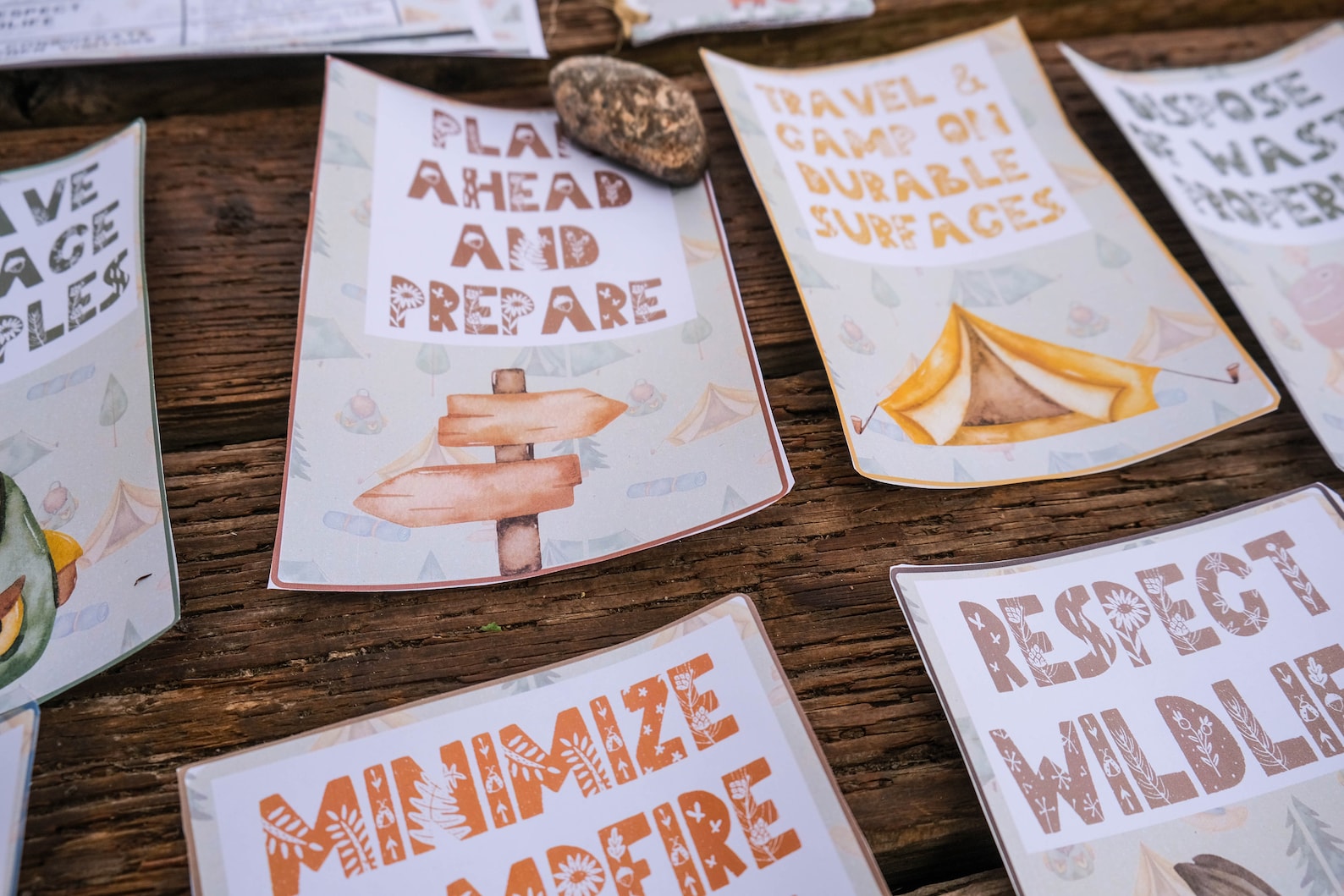
While outdoor recreation can be a fulfilling and transformative experience, it’s important to remember that the places we visit are fragile. Adopting LNT practices means that we, as adventurers, have a responsibility to leave the landscape just as we found it, or even better.
The Leave No Trace approach is based on seven core principles, each designed to address different aspects of outdoor recreation and minimize environmental damage.
Why is Leave No Trace Important?
You might be wondering, why does it matter so much if we leave a little trace behind? The reality is that human presence in nature can leave long lasting effects. From trampling delicate vegetation to polluting waterways, the smallest actions can potentially have a significant impact on ecosystems.
By following LNT principles, we can:
Preserve biodiversity: Protect fragile plants and wildlife from human interference.
Minimize pollution: Reduce littering and waste, which can harm wildlife and pollute natural habitats.
Protect ecosystems: Ensure that our adventures don’t disrupt local flora, fauna, or the landscape.
More than just preserving beauty, adopting these practices helps safeguard natural environments and promotes sustainable outdoor recreation for generations to come.
Wild places stay wild when we treat them with care.
The 7 Principles of Leave No Trace
The 7 Principles of Leave No Trace provide a simple yet effective framework for minimizing human impact on the environment while enjoying the outdoors responsibly.

1. Plan Ahead and Prepare
Effective planning is the first step to responsible outdoor recreation. By researching your destination and preparing for your adventure, you can avoid many common mistakes that lead to environmental harm.
- Research the area: Know the regulations for your chosen destination, including fire restrictions and waste disposal requirements.
- Prepare for extreme weather and potential hazards: Having the right gear appropriate for all types of weather and terrain will help you avoid leaving behind trash or other waste.
- Plan for emergencies: Knowing the area’s nearest access points, hospitals, or emergency services is crucial for a safe trip.
Avoid overcrowding: Schedule your trip to avoid times of high use, and visit in small groups whenever possible.
2. Travel and Camp on Durable Surfaces
One of the easiest ways to minimize your impact is to travel on established trails and camp in designated areas. This prevents the creation of new paths and protects fragile ecosystems.
- Stick to trails: Whenever possible, use established trails to minimize soil erosion and prevent trampling on sensitive plants.
- Camp on durable surfaces: Choose established campsites or rock, sand, or gravel surfaces for your tent.
3. Dispose of Waste Properly
The principle of “Pack It In, Pack It Out” is central to LNT. It’s essential to carry out all waste, including trash, food scraps, and hygiene products. Even organic waste can take a long time to decompose, so carrying it out ensures that the environment remains pristine.
- Pack all waste out: Bring extra bags to carry out trash, food waste, and even biodegradable materials like fruit peels.
- Use a toilet if available: If you’re in a wilderness area with no facilities, carry a WAG bag or similar for human waste.
- Dispose of human waste properly: Dig a cathole 6-8 inches deep and 200 feet away from water, trails, and campsites. Pack out toilet paper whenever possible.
- Pack out menstrual products: Tampons and pads should always be packed out, not buried.
- Wash dishes 60 meters / 200 feet from water: Use biodegradable soap and strain water to remove food scraps before scattering it.

4. Leave What You Find
It can be tempting to pick flowers, take rocks, or collect souvenirs from your adventures, but doing so can disrupt ecosystems in small ways that add up. It’s best to leave the natural and cultural heritage of the area undisturbed.
- Don’t pick plants: Harvesting plants, even flowers, can disrupt local ecosystems.
- Leave historical items alone: Don’t touch, take, or move cultural artifacts or historical markers.
- Avoid introducing non-native species: Clean your gear to prevent spreading invasive plants and organisms.
5. Minimize Campfire Impacts
While campfires are a popular part of the outdoor experience, they can be harmful if not managed responsibly. The heat from fires can damage the soil, and gathering firewood often means disturbing the landscape.
- Use a camp stove instead: Camp stoves are a great alternative to traditional campfires. They use less combustible material and produce little-to-no lasting environmental impact.
- If you must have a fire, keep it small and use only downed, dead wood. Never cut down live trees or branches.
- Burn all wood and coals to ash: Put out campfires completely, then scatter or bury cool ashes.
6. Respect Wildlife
Wildlife encounters are a highlight of any outdoor adventure, but it’s important to respect animals and avoid disturbing their natural behaviour. Feeding wildlife can alter their diet, lifestyle and behaviours, which can encourage increased encounters with humans and potential dependency.
- Observe from a distance: Use binoculars or a camera with a zoom lens to enjoy wildlife without getting too close.
- Secure food: Store food in bear-proof containers or hang it out of reach to prevent attracting animals.
- Never feed animals: Feeding wildlife damages their health, alters natural behaviours, and exposes them to predators and other dangers.
- Avoid wildlife during sensitive times: mating, nesting, raising young, or winter.
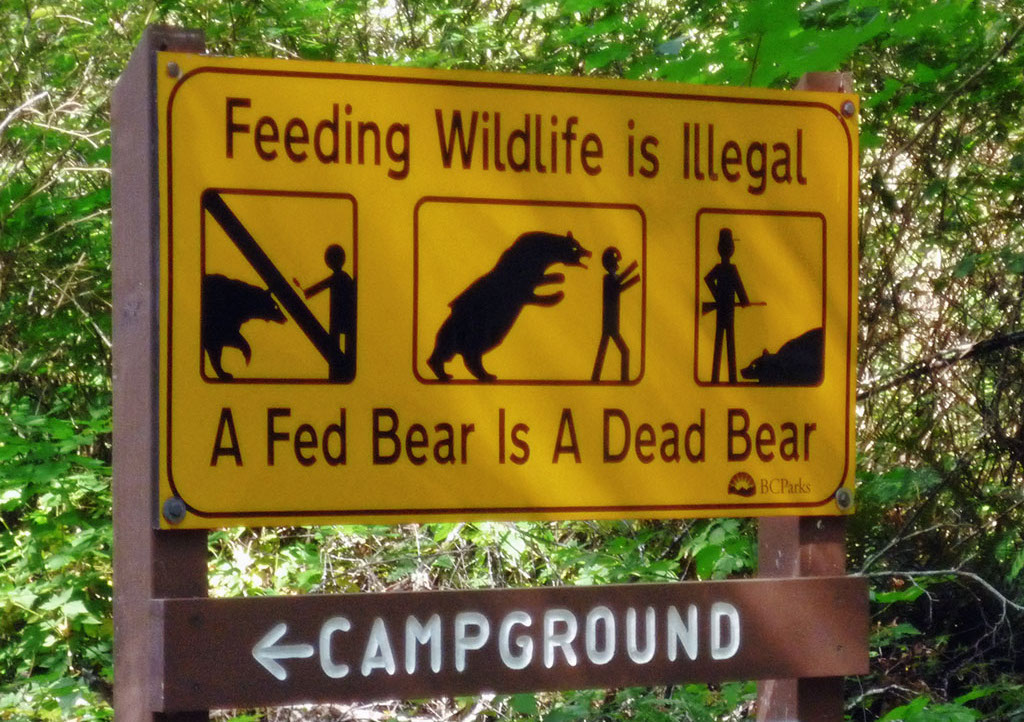
7. Be Considerate of Others
Outdoor spaces are shared by many adventurers, and being considerate helps everyone enjoy the experience. Being mindful of how your actions affect others ensures that everyone can enjoy nature in their own way.
- Respect Others’ Experience – Whether on a trail, at a campsite, or in a scenic area, be mindful that your actions impact those around you.
- Keep Noise to a Minimum – Allow nature’s sounds to take center stage. Avoid loud music, shouting, or disruptive noises, especially in campgrounds during quiet hours.
- Control Pets – Some visitors may be uncomfortable around animals. Always keep pets under control, leash them where required, and pick up after them to protect trails and water sources.
- Respect Cultural & Indigenous Lands – Many outdoor spaces are ancestral lands of Indigenous communities. Research local guidelines and respect voluntary closures for cultural or spiritual ceremonies.
The 7 Principles of Leave No Trace aren't just rules—they’re a mindset. When we follow them, we protect the wild places we love for future generations to enjoy.
How to Incorporate Leave No Trace Into Your Outdoor Adventures
Adopting LNT principles can be easy once you make them part of your regular outdoor routine. Here are some practical tips to help you integrate Leave No Trace into your adventures:
- Plan ahead: Research regulations, weather, and waste disposal options before your trip. Proper planning prevents unnecessary damage.
- Pack light: Bring only what you need to reduce waste and keep your load manageable. Less gear means less impact.
- Pack out all waste: Carry a plastic bag for trash, food scraps, and hygiene products. Even biodegradable items like fruit peels should be packed out.
- Use durable surfaces: Stick to trails and established campsites to minimize damage to fragile ecosystems.
- Minimize campfire impact: Use a camp stove instead of making a fire, and if fires are allowed, keep them small and use local wood.
- Use biodegradable soap: If washing is necessary, use biodegradable products and do so at least 200 feet from water sources.
- Respect wildlife: Observe from a distance, store food properly, and never feed animals. Human food disrupts natural behaviours.
- Encourage others: Set an example and educate fellow adventurers about Leave No Trace principles. A simple conversation can inspire responsible outdoor ethics.
By incorporating these habits into your trips, you’ll not only be protecting nature but also enhancing your own outdoor experience. The less time you spend worrying about your impact, the more you can enjoy the peace and beauty of the wilderness.
A responsible adventurer leaves no sign of their passage.
Common Mistakes to Avoid While Practicing Leave No Trace
While Leave No Trace is simple in theory, some common mistakes can still slip through the cracks. Here are some things to watch out for:
- Not securing food properly: This is one of the most common LNT mistakes. Always store food and trash in bear-proof containers.
- Straying off trails: Avoid creating new paths. Stick to designated trails and campsites to protect the environment.
- Leaving behind waste: This includes things like food scraps, tissues, and hygiene products. Always pack out everything.
By being mindful of these issues, you can ensure your trip has minimal environmental impact.
Benefits of Practicing Leave No Trace
The benefits of practicing Leave No Trace extend beyond just protecting the environment. They also improve the overall experience for everyone involved:
- Conserve resources: Protecting ecosystems ensures that these areas stay healthy for future generations to enjoy.
- Enhance your adventure: Following LNT makes your trip more enjoyable, allowing you to focus on the beauty of the environment rather than worrying about your impact.
- Foster a sense of community: As you meet other outdoor enthusiasts who follow LNT principles, you’ll be part of a growing community dedicated to responsible adventuring!
Leave No Trace isn’t just a set of guidelines—it’s a way of life that ensures the wild places we love will remain wild. By practicing LNT principles, you help preserve the beauty and integrity of nature while also enhancing your own outdoor experiences.
Whether you’re hiking through a national park, camping in the backcountry, or paddling down a remote river, every small action you take to reduce your impact matters. So, before your next adventure, make a commitment to leave the landscape as beautiful as you found it—and pass on the knowledge of Leave No Trace to others.
What's Next?
Want to explore more sustainable travel tips and eco-friendly adventures? Sign up for our newsletter at the bottom of this page to receive expert advice, eco-conscious tips, and updates on upcoming Nahua Expeditions trips, where we practice Leave No Trace principles in some of the most magnificent and wild destinations in the world!
Further Resources
What Is Leave No Trace? A Beginner's Guide
In today’s world, where outdoor adventures are more popular than ever, there’s growing focus on minimizing our impact on nature. That’s where Leave No Trace (LNT) comes in. Whether you’re hiking, camping, kayaking, or exploring remote areas, Leave No Trace is a set of principles designed to help adventurers like you preserve the beauty of our natural world.
21 FEB 2025 ・ 10 min read
Nahua Expeditions

What is Leave No Trace?
The goal of Leave No Trace is to reduce human impact on the environment, ensuring that wilderness areas remain pristine for wildlife to thrive, and for future generations to enjoy. LNT is more than just a set of rules—it’s a philosophy. It focuses on making conscious decisions before, during, and after your adventures to protect nature and wildlife from unnecessary damage.
Leave No Trace means enjoying nature without altering it.

While outdoor recreation can be a fulfilling and transformative experience, it’s important to remember that the places we visit are fragile. Adopting LNT practices means that we, as adventurers, have a responsibility to leave the landscape just as we found it, or even better.
The Leave No Trace approach is based on seven core principles, each designed to address different aspects of outdoor recreation and minimize environmental damage.
Why is Leave No Trace Important?
You might be wondering, if we don’t leave any trash behind, why does it matter so much if we leave a little trace? The reality is that human presence in nature can leave long lasting effects. From trampling delicate vegetation to polluting waterways, the smallest actions can potentially have a significant impact on ecosystems.
By following LNT principles, we can:
Preserve biodiversity: Protect fragile plants and wildlife from human interference.
Minimize pollution: Reduce littering and waste, which can harm wildlife and pollute natural habitats.
Protect ecosystems: Ensure that our adventures don’t disrupt local flora, fauna, or the landscape.
More than just preserving beauty, adopting these practices helps safeguard natural environments and promotes sustainable outdoor recreation for generations to come.
Wild places stay wild when we treat them with care.
The 7 Principles of Leave No Trace
The 7 Principles of Leave No Trace provide a simple yet effective framework for minimizing human impact on the environment while enjoying the outdoors responsibly.

1. Plan Ahead and Prepare
Effective planning is the first step to responsible outdoor recreation. By researching your destination and preparing for your adventure, you can avoid many common mistakes that lead to environmental harm.
- Research the area: Know the regulations for your chosen destination, including fire restrictions and waste disposal requirements.
- Prepare for extreme weather and potential hazards: Having the right gear appropriate for all types of weather and terrain will help you avoid leaving behind trash or other waste.
- Plan for emergencies: Knowing the area’s nearest access points, hospitals, or emergency services is crucial for a safe trip.
Avoid overcrowding: Schedule your trip to avoid times of high use, and visit in small groups whenever possible.
2. Travel and Camp on Durable Surfaces
One of the easiest ways to minimize your impact is to travel on established trails and camp in designated areas. This prevents the creation of new paths and protects fragile ecosystems.
- Stick to trails: Whenever possible, use established trails to minimize soil erosion and prevent trampling on sensitive plants.
- Camp on durable surfaces: Choose established campsites or rock, sand, or gravel surfaces for your tent.
3. Dispose of Waste Properly
The principle of “Pack It In, Pack It Out” is central to LNT. It’s essential to carry out all waste, including trash, food scraps, and hygiene products. Even organic waste can take a long time to decompose, so carrying it out ensures that the environment remains pristine.
- Pack all waste out: Bring extra bags to carry out trash, food waste, and even biodegradable materials like fruit peels.
- Use a toilet if available: If you’re in a wilderness area with no facilities, carry a WAG bag or similar for human waste.
- Dispose of human waste properly: Dig a cathole 6-8 inches deep and 200 feet away from water, trails, and campsites. Pack out toilet paper whenever possible.
- Pack out menstrual products: Tampons and pads should always be packed out, not buried.
- Wash dishes 60 meters / 200 feet from water: Use biodegradable soap and strain water to remove food scraps before scattering it.

4. Leave What You Find
It can be tempting to pick flowers, take rocks, or collect souvenirs from your adventures, but doing so can disrupt ecosystems in small ways that add up. It’s best to leave the natural and cultural heritage of the area undisturbed.
- Don’t pick plants: Harvesting plants, even flowers, can disrupt local ecosystems.
- Leave historical items alone: Don’t touch, take, or move cultural artifacts or historical markers.
- Avoid introducing non-native species: Clean your gear to prevent spreading invasive plants and organisms.
5. Minimize Campfire Impacts
While campfires are a popular part of the outdoor experience, they can be harmful if not managed responsibly. The heat from fires can damage the soil, and gathering firewood often means disturbing the landscape.
- Use a camp stove instead: Camp stoves are a great alternative to traditional campfires. They use less combustible material and produce little-to-no lasting environmental impact.
- If you must have a fire, keep it small and use only downed, dead wood. Never cut down live trees or branches.
- Burn all wood and coals to ash: Put out campfires completely, then scatter or bury cool ashes.
6. Respect Wildlife
Wildlife encounters are a highlight of any outdoor adventure, but it’s important to respect animals and avoid disturbing their natural behaviour. Feeding wildlife can alter their diet, lifestyle and behaviours, which can encourage increased encounters with humans and potential dependency.
- Observe from a distance: Use binoculars or a camera with a zoom lens to enjoy wildlife without getting too close.
- Secure food: Store food in bear-proof containers or hang it out of reach to prevent attracting animals.
- Never feed animals: Feeding wildlife damages their health, alters natural behaviours, and exposes them to predators and other dangers.
- Avoid wildlife during sensitive times: mating, nesting, raising young, or winter.

7. Be Considerate of Others
Outdoor spaces are shared by many adventurers, and being considerate helps everyone enjoy the experience. Being mindful of how your actions affect others ensures that everyone can enjoy nature in their own way.
- Respect Others’ Experience – Whether on a trail, at a campsite, or in a scenic area, be mindful that your actions impact those around you.
- Keep Noise to a Minimum – Allow nature’s sounds to take center stage. Avoid loud music, shouting, or disruptive noises, especially in campgrounds during quiet hours.
- Control Pets – Some visitors may be uncomfortable around animals. Always keep pets under control, leash them where required, and pick up after them to protect trails and water sources.
- Respect Cultural & Indigenous Lands – Many outdoor spaces are ancestral lands of Indigenous communities. Research local guidelines and respect voluntary closures for cultural or spiritual ceremonies.
The 7 Principles of Leave No Trace aren't just rules—they’re a mindset. When we follow them, we protect the wild places we love for future generations to enjoy.
How to Incorporate Leave No Trace Into Your Outdoor Adventures
Adopting LNT principles can be easy once you make them part of your regular outdoor routine. Here are some practical tips to help you integrate Leave No Trace into your adventures:
- Plan ahead: Research regulations, weather, and waste disposal options before your trip. Proper planning prevents unnecessary damage.
- Pack light: Bring only what you need to reduce waste and keep your load manageable. Less gear means less impact.
- Pack out all waste: Carry a plastic bag for trash, food scraps, and hygiene products. Even biodegradable items like fruit peels should be packed out.
- Use durable surfaces: Stick to trails and established campsites to minimize damage to fragile ecosystems.
- Minimize campfire impact: Use a camp stove instead of making a fire, and if fires are allowed, keep them small and use local wood.
- Use biodegradable soap: If washing is necessary, use biodegradable products and do so at least 200 feet from water sources.
- Respect wildlife: Observe from a distance, store food properly, and never feed animals. Human food disrupts natural behaviours.
- Encourage others: Set an example and educate fellow adventurers about Leave No Trace principles. A simple conversation can inspire responsible outdoor ethics.
By incorporating these habits into your trips, you’ll not only be protecting nature but also enhancing your own outdoor experience. The less time you spend worrying about your impact, the more you can enjoy the peace and beauty of the wilderness.
A responsible adventurer leaves no sign of their passage.
Common Mistakes to Avoid While Practicing Leave No Trace
While Leave No Trace is simple in theory, some common mistakes can still slip through the cracks. Here are some things to watch out for:
- Not securing food properly: This is one of the most common LNT mistakes. Always store food and trash in bear-proof containers.
- Straying off trails: Avoid creating new paths. Stick to designated trails and campsites to protect the environment.
- Leaving behind waste: This includes things like food scraps, tissues, and hygiene products. Always pack out everything.
By being mindful of these issues, you can ensure your trip has minimal environmental impact.
Benefits of Practicing Leave No Trace
The benefits of practicing Leave No Trace extend beyond just protecting the environment. They also improve the overall experience for everyone involved:
- Conserve resources: Protecting ecosystems ensures that these areas stay healthy for future generations to enjoy.
- Enhance your adventure: Following LNT makes your trip more enjoyable, allowing you to focus on the beauty of the environment rather than worrying about your impact.
- Foster a sense of community: As you meet other outdoor enthusiasts who follow LNT principles, you’ll be part of a growing community dedicated to responsible adventuring!
Leave No Trace isn’t just a set of guidelines—it’s a way of life that ensures the wild places we love will remain wild. By practicing LNT principles, you help preserve the beauty and integrity of nature while also enhancing your own outdoor experiences.
Whether you’re hiking through a national park, camping in the backcountry, or paddling down a remote river, every small action you take to reduce your impact matters. So, before your next adventure, make a commitment to leave the landscape as beautiful as you found it—and pass on the knowledge of Leave No Trace to others.
What's Next?
Want to explore more sustainable travel tips and eco-friendly adventures? Sign up for our newsletter at the bottom of this page to receive expert advice, eco-conscious tips, and updates on upcoming Nahua Expeditions trips, where we practice Leave No Trace principles in some of the most magnificent and wild destinations in the world!

